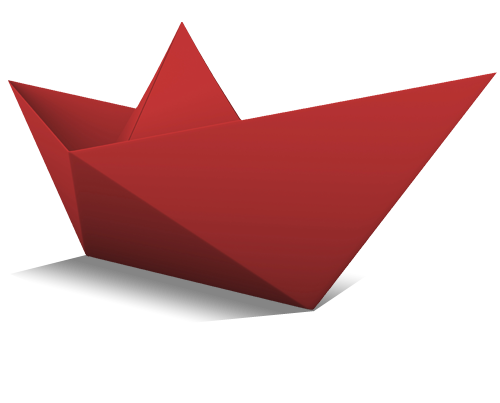P&I insurance may be the most important marine insurance a ship owner purchases.
Hull and Machinery insurance (H&M), Loss of Hire (LOH) or other marine insurances provide key coverages for marine assets.
However, it remains the case that a vessel can trade if it doesn’t have H&M insurance and Loss of Hire in place whereas the absence of P&I cover will make this virtually impossible as a vessel will be unable to satisfy its International Convention obligations with a P&I insurer Blue Card to enable the ship owner to obtain State Certificates demonstrating compliance with (as appropriate) CLC, the Bunker Convention, the Nairobi and Athens Convention.
P&I is considered an owners ‘ticket to trade’ that enables a vessel to earn income and confer a commercial benefit on an owner beyond the ability to asset play.
However, P&I is more than a ’ticket to trade’. It is more than an insurance safety net protecting an owner’s bottom line against third party liability.
It is a key relationship where the P&I insurer is viewed as the de-facto extension of a ship owner’s office in a way no other marine insurer is.
This unique positioning is heightened by the commercial importance commercial partners, including state owned shippers, oil majo
It is not an altruist interest but one that goes to protection of their reputation since, how a ship owner
handles a maritime casualty, impacts others in the commercial chain and how they are viewed when innocent third parties suffer loss or an ecological/environmental disaster happens.
To lose a ship is a loss for a ship owner and one the general public give little thought to. When a beach is polluted and wildlife is killed, bad publicity always follows.
It is important, therefore, that a ship owner has a responsive P&I provider, with a cultural ethos that matches the ship owner’s individual needs.
Today’s P&I environment extenuates this requirement when the financial volatility of past years is absent, as witnessed through strengthened International Group Clubs’ free reserves, and where leading fixed premium providers are backed by, or writing on behalf of, S&P A rated security.
With the absence of financial volatility affecting P&I Club finances, service capability allied with flexibility of approach are one of, if not the, most important differentiator between P&I insurers.
How can you ensure that your P&I provider, whilst providing appropriate cover, also meets your service needs?
It is the very challenge we are familiar with: aligning P&I cover with risk appetite and service requirements whilst reinforcing your relationship with your P&I provider, its claims team, underwriters and senior management.
We actively manage relationships so that should we be required to intercede over a difficult cover issue, we are able to diffuse a situation before it becomes a problem.
These are important promises but ones we already deliver on for existing clients.
How?
• We know the P&I market inside out, working with all International Group Clubs and major fixed premium providers
• We have regular meetings with the senior management, claims teams and underwriters of all major P&I markets
• We have probably the most ‘skilled up’ team in the market, with diverse experience gained outside broking, which complements our broking and risk management capability, making us better equipped to service your needs
Our team includes:
• Former P&I Club senior managers for International Group Clubs
• Former underwriters, including those with a leading Professional Indemnity Insurer
• Lawyers
• Shipbroker experience
• Commodity trading experience
• Industry advisers
• Unparalleled in-house expertise handling offshore risks and contractual issues
These expertise enables us to regularly advise on:
• Blue water (wet & dry) charter parties and offshore contracts including O&M Agreements
• COA
• MOA/shipyard and repair contracts
• Terminal contracts including LNG COUs
• Reviewing and drafting indemnities/LOIs
• OSRO issues and the inter-relationship with P&I cover
• Bill of lading (BSL) issues including blending/ commingling and substitute/switch bs/l
• GA including oil major related clauses
• Club cover issues and questions of ‘poolability’ of exposure under the International Group Pooling Agreement
Marine insurance is extremely important element of successful exploitation of any shipping asset and it is a direct responsibility of the Managers to provide their clients, owners of the vessels, with the various types of insurances covering all spheres of vessel’s trading.
When things go wrong on board a ship, time is of the essence. That’s why a speedy response is critical in an effective P&I (Protection & Indemnity) correspondent. P&I Clubs need prompt action and timely communication to ensure that any claims arising from an incident are fully investigated, documented and financial exposure minimized.
Our people have an extensive experience in arrangement of marine insurance covers from usual insurance such as Protection and Indemnity risks (“P&I”), Hull and Machinery marine risks (“H&M”), War risks, Freight, Demurrage and Defense insurance (“FD&D”), Kidnap and Ransom Insurance (“K&R”) together with the full protection of vessels that are passing through High Risk Areas and piracy affected waters.
In the sphere of P&I insurance arrangements we are closely cooperating with members of International Group of P&I Clubs which provide us with a fixed premium cover in line with its own Terms and Conditions. With and through our partners we ensure effective claims handling, responding immediately to owners when in need of assistance or service, assisting and completing their claims, using the Club’s loss prevention programs, provide technical and operational advice to owners and crew etc.

VESSELS CLASSED BY SISCO ARE INSURED BY SOME OF THE WORLD’S MOST PRESTIGIOUS MARINE INSURERS
We maintain a good reputation by accredited Insurance Entities within the maritime industry. In the complex maritime environment, we have achieved substantial growth in the acceptability of its classed vessels by well-known insurance firms.
SISCO in line with our declared Mission is putting its best endeavors to provide to ship owners a wide range of Insurance Options, which will assist them to successfully manage risk solutions that may arise from a rapidly challenging market place in compliance with the international safety standards.

Our success claims department is fully strengthened by having formed strong commercially sound relationships with hull underwriters, average adjusters, surveyors, P&I claims executives and leading shipping consultants and law firms located around the globe. Though these we provide to all our clients the highest level of insurance management!
A number of Hull and Machinery insuring forms are in common use and offer close to “All Risk” protection.
This form the basis of Hull and Machinery insurance and can provide an "off the shelf" remedy to the owners need for physical loss insurance protection for their vessels.
This form of coverage however does not take account of the numerous elements that form the clients overall risk profile any more than it embraces the operating philosophy, future plans, aspirations and needs of the client.

We are one of the leading companies in the class of War and Strikes Coverage and place some of the biggest and most complex war programs in the world.
A number of these programs are unique to us. We have handled more hijacking claims which has given us a depth of experience in handling piracy incidents.
Our experience and expertise has enabled us to develop bespoke kidnap and ransom products/services for owners, managers and charterers which are unique in the insurance industry.
Our team collates up-to-date information from industry military and security sources and then works with insurers to provide the most effective/ comprehensive product for either vessel specific transits or global coverage.

Since 2007 we provide security advice to our clients including crisis management in the event of an incident as we have handled a number of crisis management incidents achieving the fastest release and lowest ransom of any hijacking in the Gulf of Aden/Indian Ocean during the peak of the Somali piracy crisis.
Our proactive approach to this issue and liaison with all parties at the highest level gives us a unique understanding of this risk and its potential implications to Owners.
Our group is one of that has a dedicated Kidnap & Ransom (K&R) Special Contingency team.
Our specialists have been handling land-based K&R business for over 10 years and now look after a portfolio of over 200 corporate and private clients.
This extensive K&R experience and expertise was invaluable to our clients when the threat of Somali piracy escalated in 2007.

Our Marine Teams work closely together to create bespoke marine K&R services to meet the evolving needs of owners, managers and charterers under the most comprehensive and cost effective solution.
The decision of which K&R insurance product to purchase should not purely be a financially driven decision since it should also be seen as a risk management tool.
The choice of response consultants attaching to the policy is an important element where through our many years of experience we can guide clients to the most appropriate product providing the best levels of response experience as well as considering other important factors such as coverage, limits, pricing and the underwriters ability to handle these specialized claims.
Always we use our wealth of experience to analyze our clients' needs and find the most appropriate cover for them to guarantee their income stream in three (3) main classes of coverage.
Physical Loss or Damage; the policy responds for time lost by the vessel, as a result of physical loss or damage, so long as the loss has resulted from an Insured Peril.
Generally speaking the policy will cover against the perils defined in the vessel‘s Hull and Machinery Policy.
Extended Loss of Hire; this cover protects against events either onshore or onboard which have not necessarily caused damage to the vessel, but do nevertheless prevent the use of the vessel.
- Strikes of crew or shore workers
- Alleged pollution
- Illness and injury of crew or third parties ashore
- Desertion and/or detention of crew
- Stowaways
- Piracy
- Heavy weather
Primary Delay coverage; This service protects owners from the «loss of revenue»
suffered during delays falling into the primary layer for the first 14 days delay following
an incident.
This coverage is tailored to protect the differing exposures of Owners, Charterers,
Managers and Financiers.

The design, capabilities, furnishings and works of art on board all reflect the individual tastes of their owners, as do the leisure activities for which the yacht is equipped.
Additionally the crew‘s accommodation, at times found on a shadow craft, all mean that the owners individuality has to be reflected in the coverage that is created for them.
Our teams are one of the industry forerunners for this class of risk and can provide special facilities for a yacht of any value.
We make it our priority to establish the specifics of the client‘s yacht and its activities and develop a bespoke coverage which brings the client the same security and quality of service that we have offered our major shipping clients for many decades.

We all the time advise owners on the various clauses utilized for providing coverage for damage and associated liabilities and tailor these wordings to reflect the specific trade and operations of these unique assets.
We also advise on the building and conversion exposures associated with yachts which is a specialist area in itself.
Our strong relationship with all of the major yacht insurers is our strength in yacht insurance sector.
As the world continues unceasingly in its demand for technological advances, design of machinery and equipment throughout industry has become increasingly sophisticated, and specific for purpose.
The Maritime Industry has never been immune to this trend, oil tankers and container vessels both being regarded as innovative and almost revolutionary, in their time, and with their emergence came the need for new insuring forms, in the recent past, vessels of a new size were developed to carry product for the burgeoning LNG industry.
Our business partners was central in the discussions with Underwriters that took place to cater to this new class of tonnage, and as a consequence, today we place over 40 per cent of the global LNG fleet.
This is no less the case today, with tonnage being ordered and built to perform highly defined and very specific functions for different Industry sectors.
A number of these units are hybrids; water borne craft performing functions previously undertaken ashore, or are
faced with exposures more traditionally found in non-Marine markets.

This specialist tonnage continues to emerge with their own peculiar risk profiles.
These includes highly sophisticated (DP3) Offshore Construction Vessels being used to support the requirement to develop deep water drilling projects, single function support vessels carrying the latest systems and equipment; floating production, storage and off-loading vessels for both oil (FSO and FPSO) and now LNG (FLNG) FSRU’s; and self propelled power barges, which carry large generating plants, for use as temporary power sources to entities ashore.
Our approach to this tonnage remains consistent!

Our Capabilities
Amongst our capabilities we specifically highlight the following areas in which we provide
added value to our clients:
Risk Placement; An operator may require insurance to cover a range of exposures
including liability, property, business interruption, berth blockage and terrorism.
Many of these exposures can be covered by accessing one of the insurers in the London
Market who specialize in Ports and Terminals exposures.
The alternative is a structured placement using a combination of policies and insurers
in London and local markets.
For major operations, with significant property values, a structured placement may be more cost effective than a “one stop shop” placement strategy.
Global Programs; The consolidation of terminal services means that an operator may have 20 or more operations around the world each one facing a unique combination of asset, liability and financial risk exposures and legal environments.
We have substantial experience structuring global programs that cater to the particular insurance requirements and risk profile of each operation, within a cohesive framework of coverage, limits and deductibles to enhance the operator’s buying capacity and leverage without compromising on coverage or flexibility for the individual location.
Ancillary Insurances; An operator will invariably require other insurance coverage such as Employer’s
Liability, Motor, and Directors and Officers.
Our Ports and Terminals team has the experience advising on and arranging these ancillary insurances on behalf of our clients, and can call upon our specialist teams in London and our global network of offices to provide cost effective solutions.
Analysis of Lenders’ Requirements; The cost of building or upgrading a port or terminal with new generation equipment capable of handling post panamax vessels is significant.
As a result, many operators have secured project financing to meet these costs. Lenders protect their investments by prescribing the levels and terms of insurance purchased by the operator.
We are experienced in analyzing and structuring insurance solutions that comply with lenders' insurance requirements.
We also provide advice to banks on the nature and level of insurances that an operator should purchase.
Comparison of terms and policy wordings; A policy wording from one insurer, whilst broadly suitable, may contain exclusions or limitations that make it inappropriate for a particular operator given the nature of the cargoes they handle, their location or the legal framework in which they operate.
We compare wordings for our clients to ensure that the coverage meets their specific needs and those of their bankers, as well as assist in choosing between competing markets.
Captive Risk Transfer; We have been instrumental in designing, constructing and managing Captive programs for port and terminal operators including detailed feasibility studies, pricing and re-insurance
structure.
Risk Management; We understand that risk management and loss prevention is an integral part of a complete insurance solution.
Working closely with specialist insurers and their in house survey and loss prevention teams we are able to provide guidance in the latest developments in risk management specific to the ports and terminals sector.
Claims Management; Our detailed knowledge of port and terminal operations and market conditions allows us to achieve optimum outcomes and to provide pertinent advice to our clients when incidents occur.

Charterers’ Liability Insurance
As a charterer you face many diverse exposures which require careful thought in order to properly align your liability cover with your risk appetite.
For those advising you, it requires a knowledge and understanding of your business dynamic; an appreciation of how the legislative and economic environment impacts that exposure; an awareness of potential risks linked to the credit worthiness of your trading partners; an understanding of jurisdictional peculiarities connected with your trades, including any custom of the trade; and an appreciation of the bargaining parity between you and your commercial counterparts that impact the ability to achieve a balanced contractual allocations of risk.
Our team, with its experience in placing and servicing charterers’ risks globally across wet and dry trades, including offshore, combined with our understanding of the products available, is a guarantee that you will have Appropriate cover, aligned to risk appetite, at the most competitive price backed up by a respected service team capable of providing full claims advice and contractual support.
Typical examples of Charterers’ Risks
• Liability for Loss of or Damage to Cargo
• Damage to Hull Liabilities
• Liability for Death and Personal Injury
• Oil Pollution Liabilities
• Wreck Removal Liabilities
• Fines
• Legal Disputes (FD&D)
• Loss of bunkers
Liability for Loss or Damage to Cargo (i.e. P&I type risks)
• Depends upon the terms of the Charter party.
• Time or Voyage Charterers may incur liability for loss or damage to cargo caused by stevedores who are deemed to be the servants of the charterer.
• The NYPE Charter party form will normally contain Inter Club Agreement prescribe apportionment of cargo liability.
• Voyage Charters “FIOS” (free in / out stowed) or “FIOST” (free in/out trimmed) may result in charterer being found liable for loss or damage to cargo during cargo handling operations.
Damage to Hull Liabilities(i.e. DTH risks)
• Caused during the loading or discharging of cargo by stevedores and the like.
• Caused as a result of cargo shifting during voyage due to inadequate or incorrect stowage by stevedores employed by the charterer.
• Due to unsafe port or berth.
• Damage to engines if caused by poor quality bunkers supplied by the charterer.
Examples of Charterers’ FD&D Risks
Covering legal costs and expenses for disputes in connection with:
• Charter party, bill of lading, contract of affreightment, disputes in relation to hire, offshore, set off freight, dead freight, laytime, demurrage, despatch, speed performance, description of vessel and/or damages for detention
• General and/or particular average contributions
• Charges, disbursements and the like from agents, stevedores etc. Typical examples of risks that are not automatically covered under a Standard Charterers’ Liability Policy
• Physical loss of Charterers’ Bunkers.
• Charterers’ liability for pollution in his capacity as cargo owner.
• Freight at Risk.
• Charterers’ P&I liability and DTH liability caused by War Risks.
• Trade Disruption due to delay.
• Liability arising from breach of or deviation under the Contract of Carriage such as cargo carried on deck against under deck BOL’s.
Typical examples of delay (or TDI) issues that are not covered under a standard Charterers’ Liability policy
• Strike, lock-out, stoppage or restraint of labour.
• Rebellion, riots, civil commotions, political protests,action by environmental objectors.
• Fire, explosion or mechanical breakdown on land
• Earthquake, volcanic eruption, heave, landslide or subsidence.
• Loss or damage to vehicles, vessels or aircraft carrying or transhipping cargo or spare parts to or from an insured vessel.
• Closure of a port, berth or sea lane as a result of an order made by an authority.
• Physical obstructions in any port, berth, sea lane or navigable waterway for any abnormal reasons.
• Imposition of quarantine upon an insured ship.
• Stowaways.
• Storm, tempest, flood, sandstorm, snow, ice, fog or lightning.


